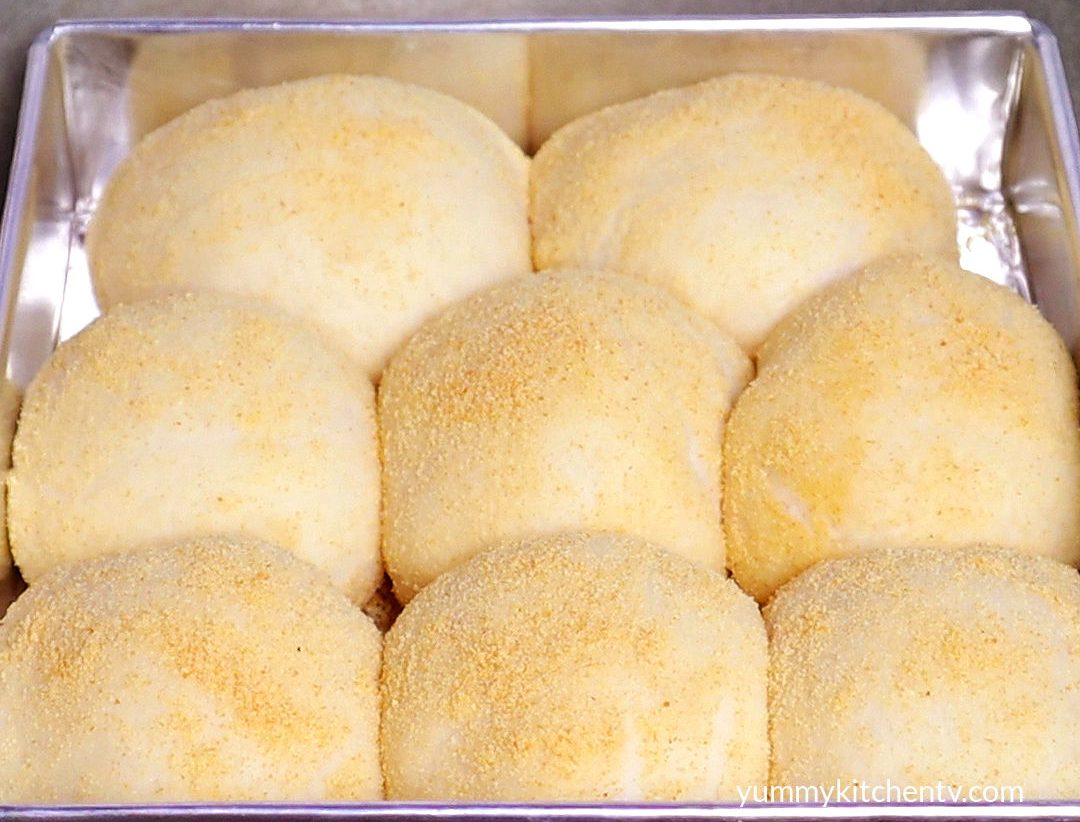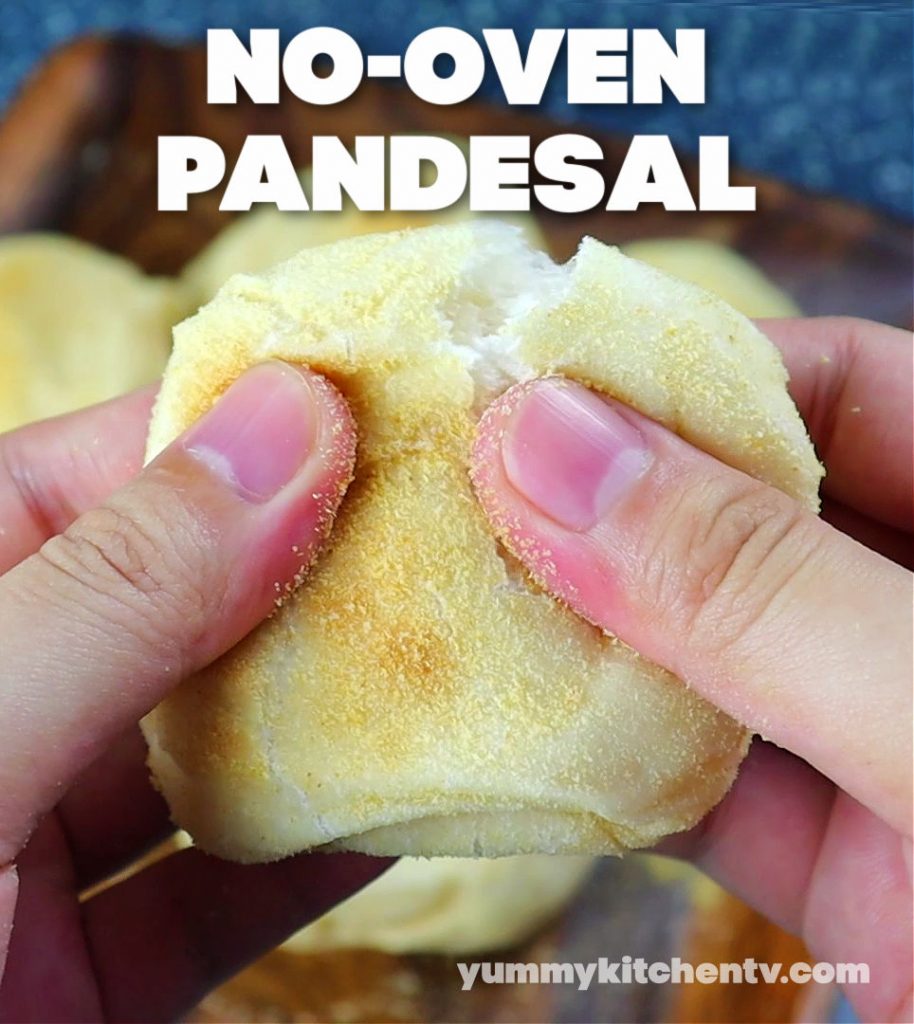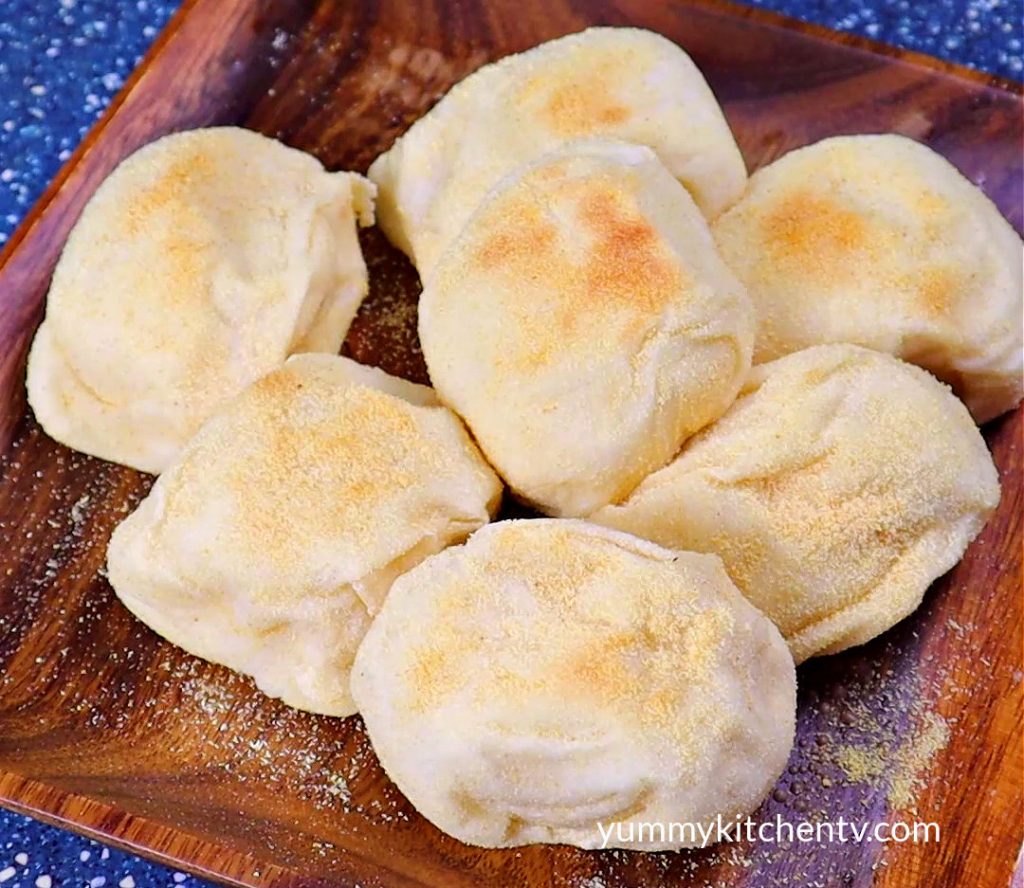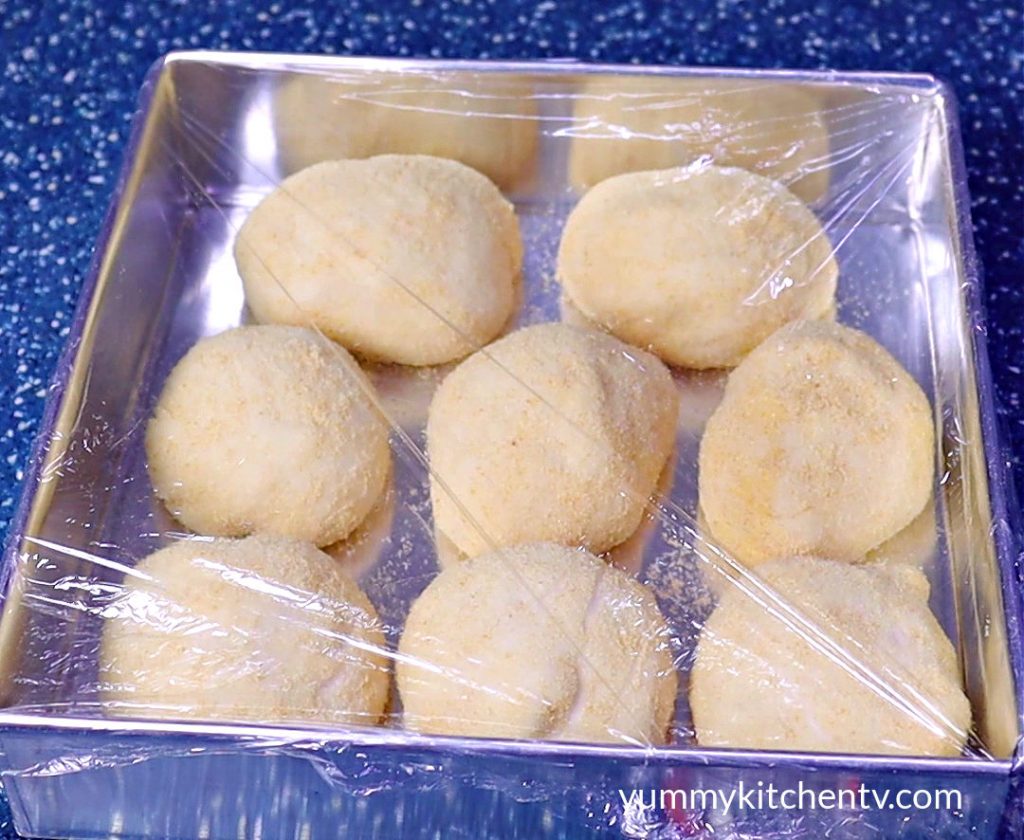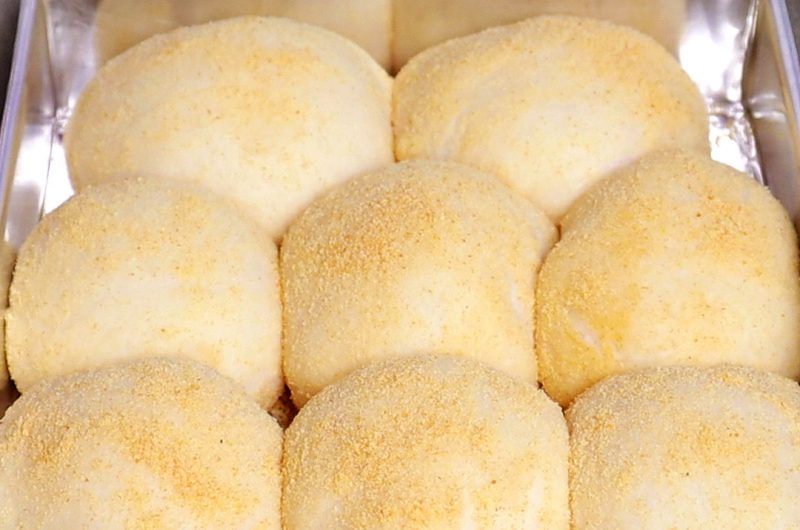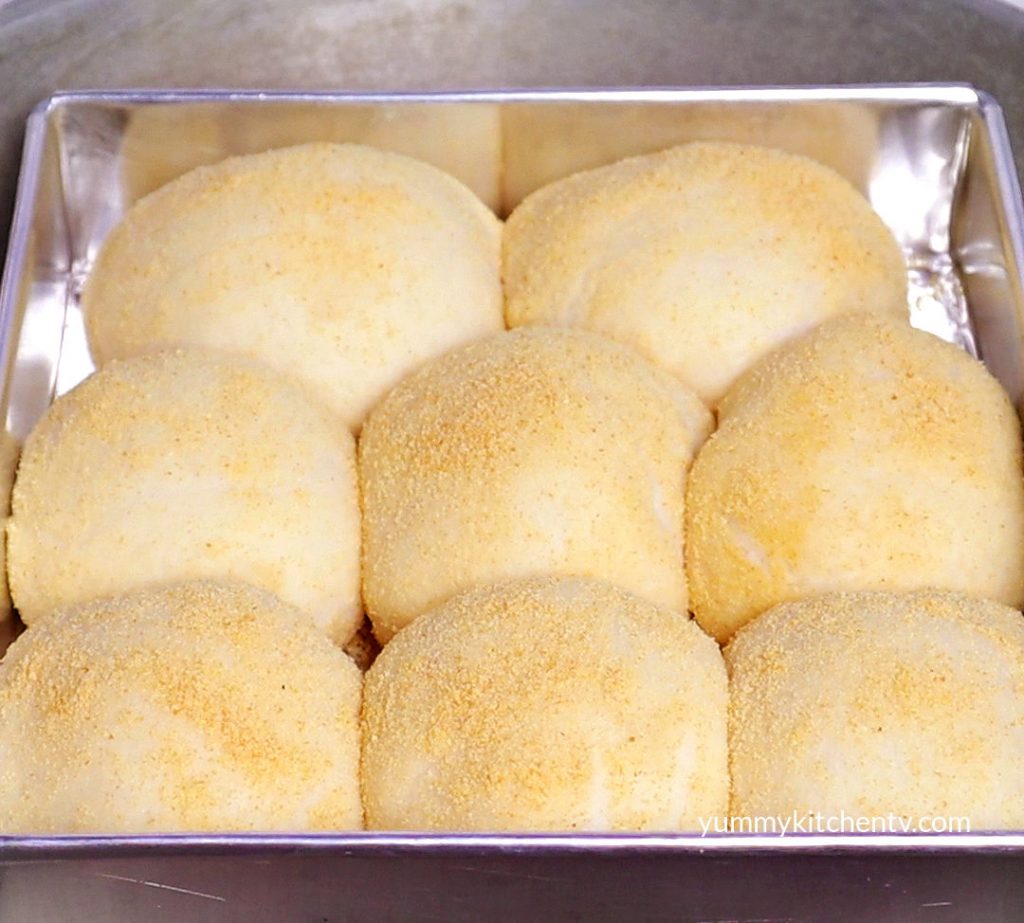Is kuya panadero not here yet? Missing pandesal but stucked at home? Try this NO-OVEN pandesal recipe and make your first homemade pandesal today! Never ran out of this soft and fluffy pandesal. Truly a favorite!
PANDESAL NO-OVEN
Pandesal may be a regular bread for some but it is my go-to breakfast if I cannot think of something to eat. The word pandesal is actually a Spanish term for “salt bread”. Pandesal is very flexible since you can eat it as it is or cook some eggs for filling. I started to really appreciate pandesal when I became an adult. I hated it as a kid because I feel like I’m a lola already. Pandesal really brings a lot of childhood memories as I eat it while drinking my morning hot chocolate and watching Unang Hirit.
Pandesal is a very affordable bread and you can buy just as many as you like. But there are just some mornings where our favorite kuya panadero is late or absent. By then we miss pandesal so much. Learn how to make this no-oven pandesal at home to always have a stock of pandesal whenever you like!
HOW TO COOK NO-OVEN PANDESAL
Unleash the inner baker in you! Do some arm workouts to prepare your arms for a lot of kneading action.
Like some pastry products, yeast is needed to make the resulting pandesal fluffy. Good thing that there are available dry active yeast which is very easy to use. To prepare a yeast mixture, just mix some warm milk, sugar and the dry active yeast. There are so much science going on behind the yeast mixture and this blog would be so long if we included that. After you prepare the yeast mixture, time to make the actual dough. Basically you are going to mix all the dough ingredients until you make a shaggy dough.
Now it’s time for some kneading action. Do not be too intimidated with all the kneading needed to make a nice pandesal. There would also be rest time to allow the gluten to relax and give you a soft and fluffy pandesal. Knead the shaggy dough for the first time and add some oil before you knead it for the second time. Make sure that the oil will be completely incorporated in the dough. The next few steps will involve alternating dough resting and kneading. Then, you will portion the pandesal into serving pieces. Before you actually bake the pandesal, you will be needing to roll the dough in breadcrumbs and rest for the last time in a baking pan.
Here we present you a hack on how to bake pandesal without an oven. You will technically imitate the environment on the inside of an oven by preheating a pan and then cooking the pandesal indirectly from the heat. Let it cook for 15-20 minutes or if you want a brown bottom, 20-25 minutes under 350F or 180C. If you have an oven, you can still use this pandesal recipe and bake your pandesal for 15-20 minutes using the same temperature.
After baking, remove the pandesal from the pan/oven. Let the pandesal cool down a bit and then you can enjoy it. Some people want to eat freshly-cooked hot pandesal and if you’re one of them, just skip the cooling down part and enjoy your pandesal with some hot coffee or tea while watching the sunrise.
Pandesal Recipe
Pandesal bread is very popular and delicious and it is sought after in Philippines. This pandesal recipe will guide you step by step to make best pandesal for your loved ones. This filipino bread is can be made with this easy pandesal recipe and this comes with pandesal ingredients and pandesal recipe video
No-Oven Pandesal
Course: Uncategorized4
servingsIngredients
2 tablespoons warm milk
1 tablespoon yeast
¼ cup + 1 teaspoon white sugar
1 teaspoon salt
½ cup water
2 cups all-purpose flour
extra flour for dusting
2 tablespoons oil
1/3 to 2/3 cups breadcrumbs
Directions
- For the yeast mixture, add the warm milk, yeast, 1 teaspoon sugar in a small bowl and mix well. Set aside for 10 minutes.
- In a separate larger bowl, add ¼ cup sugar, salt and the yeast mixture and mix it well. Add the water and mix well.
- Add flour and mix well until you achieve a shaggy dough.
- Transfer the dough in a clean flat surface. Dust the surface with more flour and knead the dough until smooth.
- Add some oil to the dough and knead until the oil is well-incorporated. Dust with some flour and knead again. The dough should bounce when poked with a finger.
- Place the dough in a greased bowl and cover with plastic wrap. Let it rest for an hour.
- Knead the dough to remove some air. Dust the surface with flour. Form the dough into a circle and cut it in half.
- Roll one half of the dough into a log and divide it in 4 to 5 pieces.
- Roll each piece into a ball. Tug the outer dough to the middle to create a smooth surface. Coat each dough ball in breadcrumbs and place in a baking pan. Repeat these steps with the rest of the pieces.
- Cover the baking pan with plastic wrap and let it rest for 1 to 1 ½ hours.
- To bake using an oven, bake in a preheated oven for 15 to 18 minutes under 350F or 180C. To bake in a pan, heat a pan using medium heat and cover for 15 minutes. Place a metal rack inside. Place the baking pan containing the pandesal dough on the metal rack. Cover the pan for 15 to 18 minutes. For a brown bottom, pan-bake the pandesal for 20 to 25 minutes.
- Remove the baking pan from the heated pan. Let the pandesal cool to room temperature and place in another metal rack to cool fully.
- Transfer the pandesal in a serving plate and enjoy with hot coffee or tea.
Watch how to Cook Pandesal without Oven
How to Cook Pandesal without Oven (TAGALOG)
MGA SANGKAP:
- 2 kutsara ng warm milk
- 1 kutsara ng yeast
- ¼ tasa + 1 kutsarita ng asukal na puti
- 1 kutsarita ng asin
- ½ tasa ng tubig
- 2 tasa ng harina
- extra harina (para sa dusting)
- 2 kutsara ng mantika
- 1/3 hanggang 2/3 tasa ng breadcrumbs
PAANO LUTUIN:
- Para sa yeast mixture, ilagay ang warm milk, yeast at 1 kutsaritang asukal sa isang maliit na bowl. Haluin ito ng mabuti at isantabi ng 10 minuto.
- Sa isang mas malaking bowl, ilagay ang ¼ tasa ng asukal, asin at ang ginawang yeast mixture. Haluin ito ng mabuti.
- Maglagay ng tubig at haluin ito.
- Ilagay ang harina at haluin ito hanggang makabuo ng buhaghag na dough.
- Ilipat ang dough sa isang malinis at flat na surface. I-dust ang surface ng konting harina at masahin ang dough hanggang maging smooth.
- Maglagay ng mantika sa dough at masahin ito hanggang humalo na ang mantika. I-dust ulit ng konting harina ang surface at masahin ito ulit. Kapag pinress ng konti ang dough gamit ang daliri, dapat babalik ito sa original shape.
- Kumuha ng isang bowl at ibrush ito ng konting mantika. Ilagay ang dough sa bowl at takpan gamit ang plastic wrap. Isantabi ito ng isang oras.
- Pagkatapos ng isang oras, masahin muli ang dough para lumabas ang hangin sa loob nito. I-dust ng konting harina ang surface at gawing bilog ang dough. Hatiin ito sa dalawa.
- Kunin ang kalahati ng dough at i-roll ito ng pahaba. Hatiin ito sa 4 to 5 na piraso.
- Iroll ang bawat piraso ng pabilog. Hilahin paloob dough para makagawa ng smooth na surface. I-coat ang bawat dough sa breadcrumbs at ilagay sa isang baking pan. Gawin ang mga steps na ito sa iba pang piraso.
- Takpan ang baking pan gamit ang plastic wrap. Isantabi ito ng 1 hanggang 1 ½ oras.
- Para i-bake gamit ang over, i-bake ito sa isang preheated oven ng 15 hanggang 18 minuto gamit ang 350F o 180C.
- Para i-bake gamit ang kaldero, magpainit ng isang kalderto gamit ang katamtamang apoy at takpan ito ng 15 minuto. Ilagay sa loob ang metal rack. Ipatong sa metal rack ang baking pan na may lamang dough. Takpan ito ng 15 hanggang 18 minuto. Para sa brown na ilalaim, hayaan itong ma-bake ng 20 hanggang 25 minuto.
- Alisin ang baking pan sa kaldero at hayaang lumamig ang pandesal. Ilagay ang mga pandesal sa isa pang metal rack para mas mabilis na lumamig.
- Ilipat ang mga pandesal sa isang serving plate at ienjoy kasama ang mainit na kape o tsaa.

